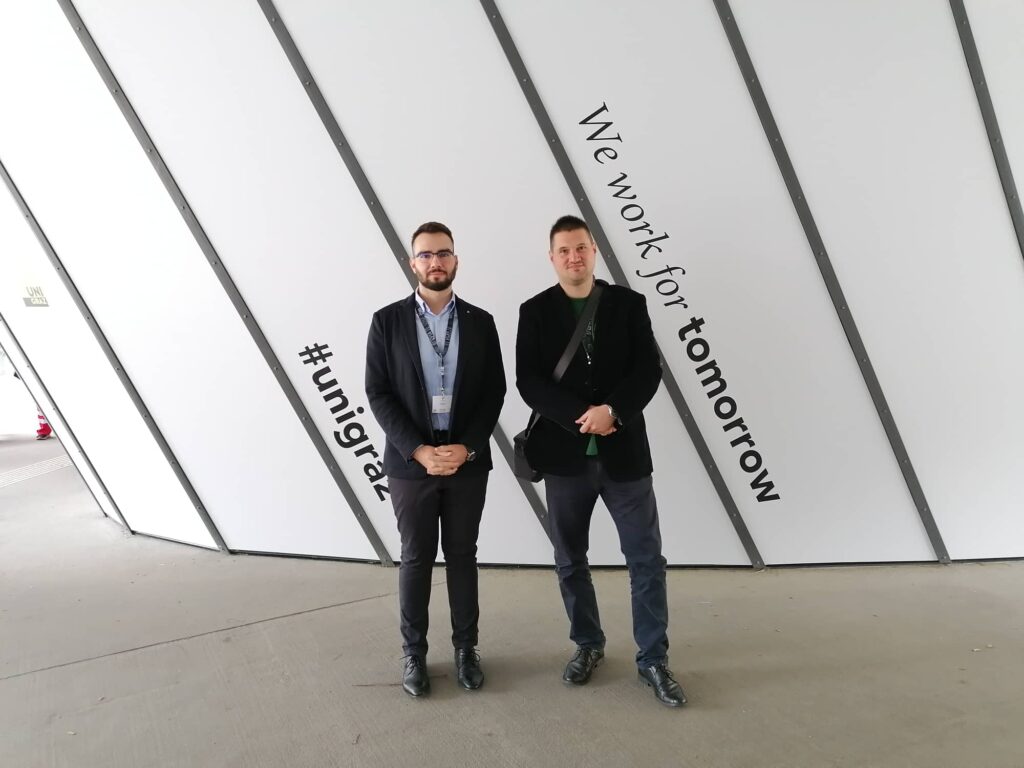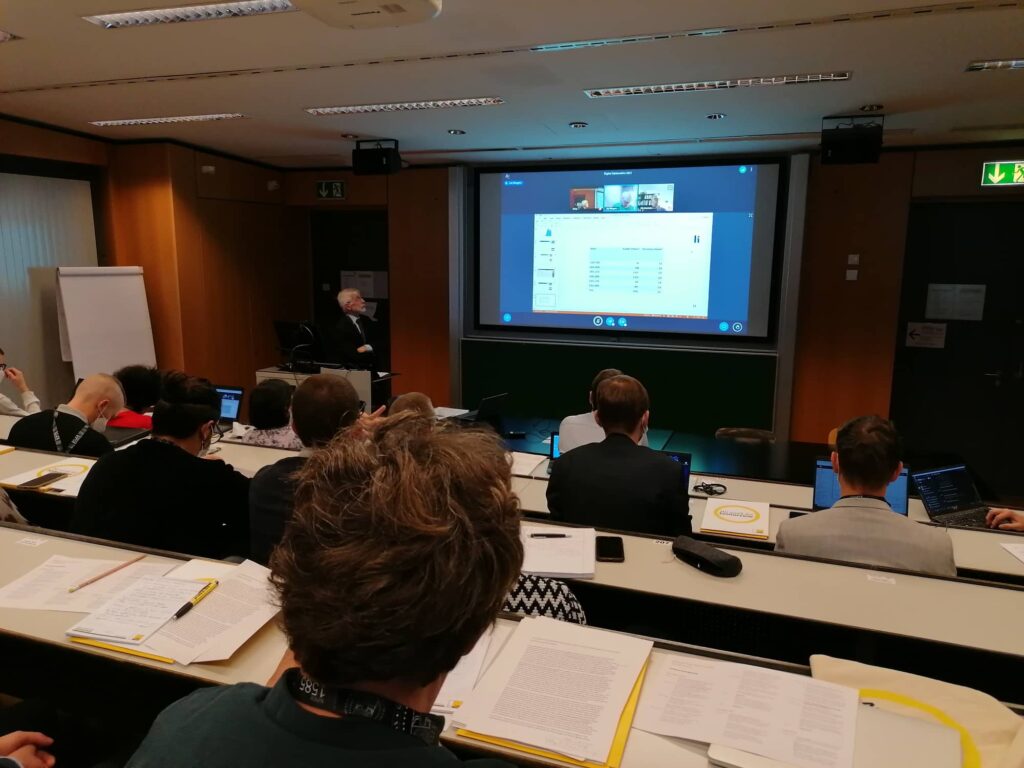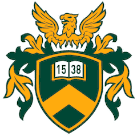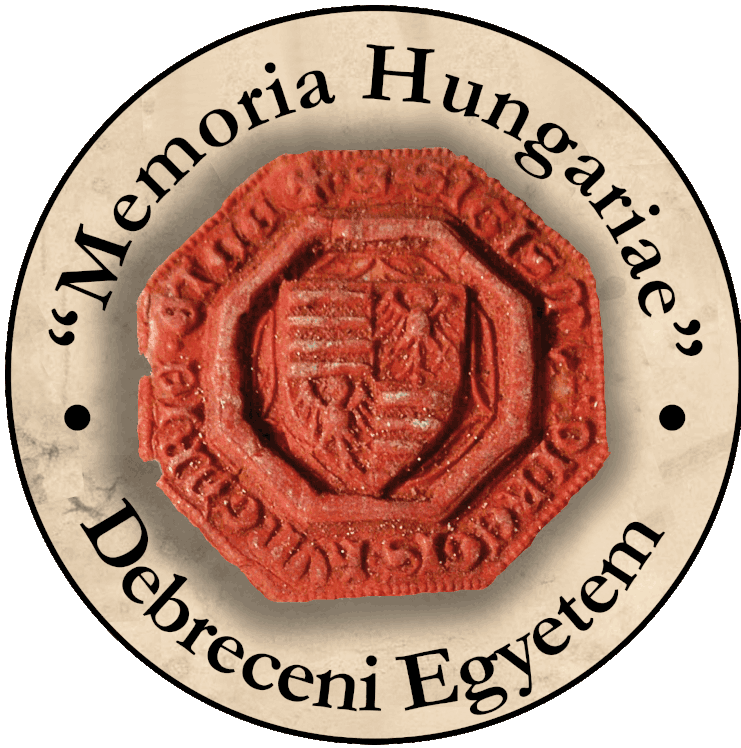Novák Ádám munkatársunk Ónadi Sándor PhD hallgatóval közösen képviselte kutatócsoportunkat a “From Digital to Distant Diplomatics” ERC (European Research Council) projekt által az Universität Grazon megrendezett “Digital Diplomatics 2022” c. konferencián.

A “Database of diplomatic sources and 3D scanning of wax seals – Observations” c. előadásukban a kutatócsoport munkáján kívül bemutatták a digitálizált forrásokat tartalmazó online adatbázisukat és kísérleti 3D digitalizálási projektjüket.
A program megtekinthető itt.

Előadásuk absztraktja:
At the conference we wish to present two digital projects of the “Hungary in Medieval Europe” Research Group of the University of Debrecen, which are based on original medieval sources.
Our research group was established in 2014 within the frameworks of the Lendület (Momentum) Programme of the Hungarian Academy of Sciences, later with the support of the University of Debrecen and more recently with the support of the Eötvös Lóránd Research Network, it operates a digital online database, the theme of which is the history of medieval Hungarian diplomacy. Moreover, in a pilot project with the University of Prešov, as part of the 2016 exhibition “Gothic in the Monastery of Pilis – King Andrew II’s French Relations”, we digitalized original medieval wax seals and their plastic copies using 3D measurement. In this presentation, we will introduce these two projects and our experiences.
Charters are the most important sources of the Hungarian Middle Ages. However, only a very small number of these have survived, and many of them were destroyed during the Ottoman rule and the storms of history (World War II, the revolution of 1956, communist secularisation and nationalisation). What is more, a significant proportion of them ended up abroad after the the end of World War I. Nevertheless, searchability was greatly improved by a project launched by the Hungarian National Archives, which placed the original charters held in Budapest in a common system, namely the Diplomatic Archives, and those held by the institutions in the countryside and abroad were placed in the Diplomatic Photo Collection. The resulting Collectio Diplomatica Hungarica (DL-DF) has thus greatly facilitated our research.
However, as the data were often heterogeneously entered into the system and the development was rather periodical, diplomas or parts of diplomas, and metadata were left out at times. Thus, some parts of Hungarian-related material kept abroad are missing, or the microfilmed recordings of the documents are missing some details, such as the reverse of a document, the seal strips, and the seals themselves.
After the completion of a six-year research programme, the records of the Hungarian-related documents kept in Warsaw (AGAD) have been uploaded in 2022 to the online database created by our Research Group. 785 records of 98 diplomas can be searched in the database using 20 metadata fields. Not only the charters, but also the photos of the seals are available with a unique, referrable score. These are particularly important data with regard to medieval diplomacy. Of the important treaties, the Polish copies made for the Hungarian royal archives have been lost, and only the Hungarian copies made for the Polish side have survived. We also published the text of the diplomas, often modernising and supplementing the hundreds of years old editions. An important goal was to publish them online in digital format and, in addition to our Research Group’s website, make our materials available on the Hungarian public collections database, the Hungaricana.
The pilot project on 3D seal digitalisation primarily served installation purposes to replace hard-to-borrow objects with replicas that closely resemble the originals for an exhibition in Szentendre (Ferenczy Museum Center) in 2016. During the project, it became clear that 3D technology – both measuring and printing – not only makes medieval wax seals more presentable, but also saves this type of source from forced deterioration. Indeed, wax seals are quite fragile, and the question of the preservation of centuries-old tradition has arisen by the changing climatic conditions. In practice, we undertook heritage preservation with this technique, since 3D measurement means non-contact copying, which is something that neither plaster nor plastic copying can guarantee. This is a particularly important aspect for a crumbling source type that is inevitably damaged with every single movement.
Furthermore, the technique also has scientific, educational and museum-educational potential. We placed the known specimens of the second double royal seal of Andrew II, King of Hungary under examination and came forward with a hypothesis. The seal has not been preserved intact, but the 14 fragments allow us to create the most accurate version using 3D technology. A short film was made for the exhibition, which uses 3D models and spectacular animations to present the history of Hungary and explain the nature of 3D technology. After the 3D models were computer-edited, the lost seal matrix was also reproduced by turning the original impressions “inside out”, so that at the opening of the exhibition, visitors were able to see an accurate copy of the seal of French-born Archbishop Robert, who was the Archbishop of Esztergom in Hungary in the 13th century.




